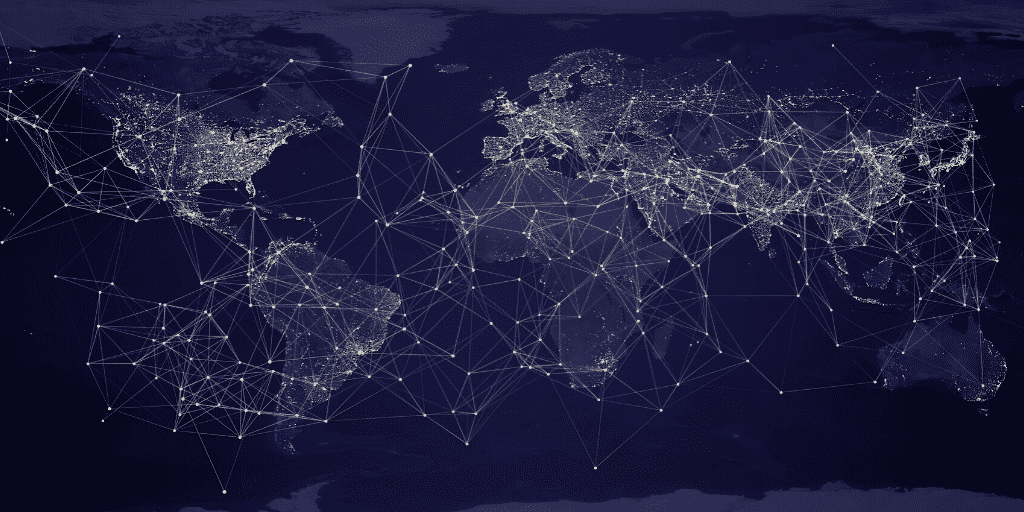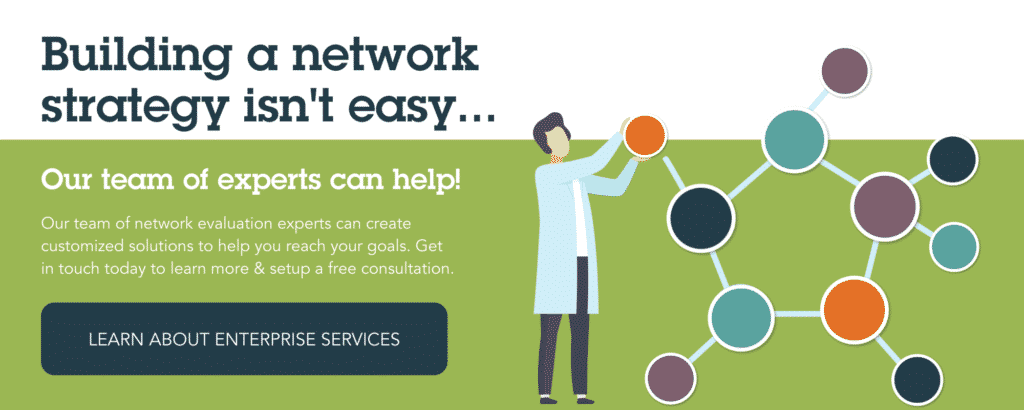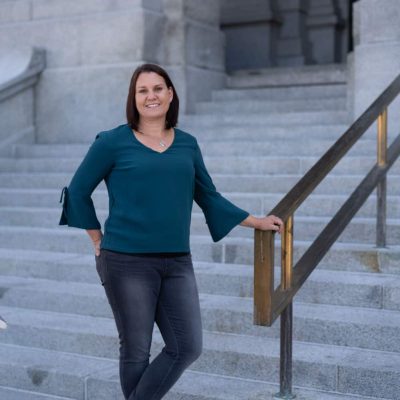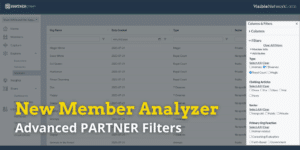
Networks are the Answer… Right?
While most of us think networks are the answer, it’s not always true. It’s okay to get a little overwhelmed by how over-networked we have become: I certainly do. That might surprise you, given that I run an organization whose mission is to support collaborative innovation and networking through technology, data science, evaluation, and training.
Networks are the Answer… Right?
Like you, I keep hearing that there are big wicked problems to solve, and that networks are the answer, right? I’m all in, in so many ways.
But I’ve started to notice that EVERYONE is engaged in collaboration and networks. And not just one, two, three, but many networks. That means that almost everyone I interact with in the public and nonprofit sectors are working in multiple networks across multiple initiatives, all day long, every day!
Three Telling Questions.
I have adopted a practice…every time I give a talk these days (about twice a week), I survey my audience at the start and ask three questions:
- How many of you are in a network working across sectors?
- Everyone raises their hands.
- How many of you are in 3 or more networks?
- About 80% raise their hands.
- How many of you wish a few of these networks could just end already?
- About 80% keep their hands up.
And this is making me really curious. What is going on here? Aren’t we all very excited about networks? Don’t we all know that working together will yield greater outcomes than working alone? Shouldn’t we all believe that impact takes collaboration?
Don’t Networks Work?
The truth is, I’m starting to wonder if we have pushed the limits on this concept. And if so, what are the consequences? Today, funders, policymakers, program heads, and just about everyone I know, is pushing for more collaboration, networking, and partnerships. In fact, most funders today will only fund collaborative solutions.
And yet, last week I was sitting in a graduate class I teach on collaborating across sectors, and one of my favorite network scholars of all time, Dr. Darrin Hicks, was lecturing to the class when suddenly he said, “you know, that moment when you realize you’ve put all sorts of time and energy into collaboration and you suddenly realize you could have done it better alone?”
Like the rest of the class, it took me a second to realize what he was saying. He then went on to say that his research shows that 3 out of 4 networks fail. They do not have the impact intended. And yet, we are committing a lot of time, money, resources, and energy into building cross-sector networks.
Which leaves me with a few big pressing questions:
- What are the equity implications of asking communities to build more relationships when they have already spent through their “relationship budgets”?
- What have we collectively learned about networks, how to manage them, and what works?
- How do we stop the network crazy, leverage the best of the approach, and open up the solution space again to networks AND alternative solutions?
Introducing a Three-Part Series: Networks Are the Answer… Right?
Over the next few weeks, I am going to explore these questions. I’m certain that networks, collaboration, and partnership approaches are better than not having them. An oft-cited benefit of networks is that they leverage resources. And yet, when the solution begins to require more resources than are gained, we have a responsibility to make sure that the limited resources we have are spent efficiently and effectively and that programs achieve their mission.
Two quotes recently guided my questions:
“The overwhelming conclusion from our research is that seeking collaborative advantage is a seriously resource-consuming activity so is only to be considered when the stakes are really worth pursuing. Our message to practitioners and policy makers alike is don’t do it unless you have to” (Huxham and Vangen 2005:13 italics in original).
And from one of my own mentors Ann Marie Thompson and James Perry: “Collaborating for collaboration’s sake or to achieve only individual goals is likely to result in failure given the complexity of the collaboration process” (Thomson and Perry 2006:28).
I am going to go out on a limb, at a time when network approaches and solutions are at an all-time high, and explore the idea that networks could potentially hurt the very people we are trying to serve.
Why? Because when I stand in front of my audiences and tell them that I’m about to show them how network science, data, and strategies can get them the same collaborative advantage with fewer resources – there is a collective sigh of relief.
I want to know – how can we support people and organizations to do better, smarter networking? I believe it is possible.
About the Author: Dr. Danielle Varda
CEO, Founder, Professor, & Mother of Three Spirited Girls
Danielle is a scientist turned start-up founder, leading Visible Network Labs as CEO. Her combination of 20 years as a network scientist studying social connectedness and health, published author, 12 years as a tenured professor at the University of CO Denver, and her successful launch and scaling of the Center on Network Science came together in one big idea to start VNL. She is an entrepreneur, technologist, network scientist, fundraiser, and mother to three spirited girls. Her calling came when she realized her unique ability to develop technology solutions bridge complex systems science with everyday applications in communities, organizations, and business. She is a nationally known expert and keynote speaker on applied network science, with specific expertise in health system, public health system, entrepreneurial ecosystems, and educational system approaches. Danielle has published over 30 peer-reviewed articles on networks and their impact on health, well-being, and economic outcomes. Danielle leads VNL’s strategic partnership approach, is the company’s lead fundraiser, and has a vision for how to utilize network science to solve our most pressing and intractable problems.
In addition to her leading VNL, she is also an Associate Professor at the School of Public Affairs, University of Colorado Denver where she is Co-Director of the Center on Network Science, Director of the Nonprofit Concentration in the MPA program, and Advisor to the Dual MPA-MPH Degree. Additionally, she holds a secondary appointment in the Colorado School of Public Health, Department of Health Systems, Management, and Policy. She also has a courtesy Associate Professor appointment in the School of Information Sciences at the University of CO Boulder.








